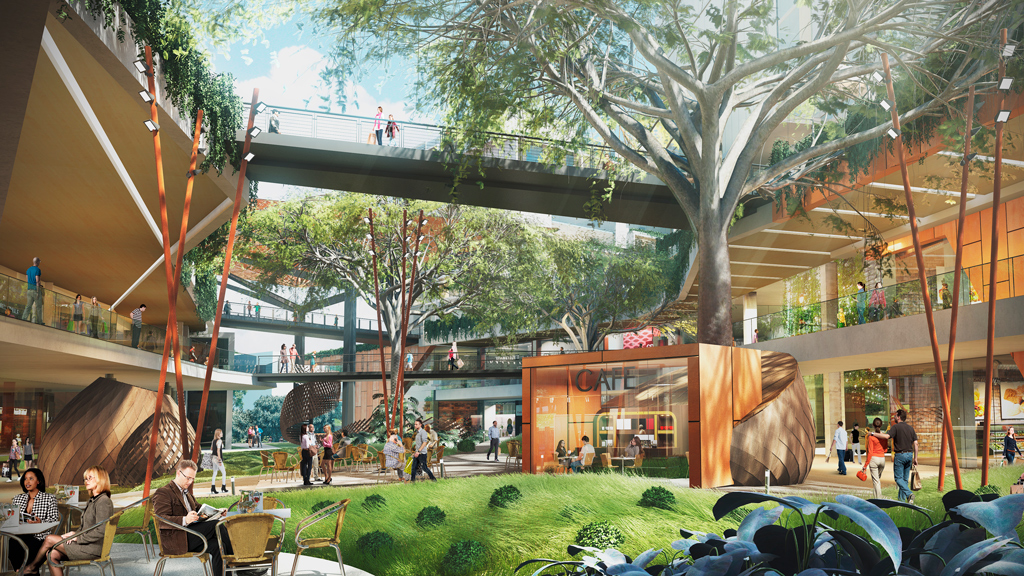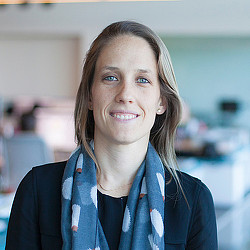Crafting Our Way Into a New Era of Human Connection
June 16, 2020 | By María Paula Sáenz
Editor’s Note: This post is part of our ongoing exploration of how design is responding to the COVID-19 pandemic.
With all the talk about re-entry, return to work, and reopening of retail and schools, it seems the measures the world is taking to welcome people back are somewhat in conflict with our longing for community and connection.
Surely hand sanitizer, social distancing, and infrared temperature screening will satisfy the public’s desire for what’s “safe enough” for now, but this assumes that people will forever be in task mode. It’s natural to expect our basic needs to be prioritized in this first re-entry phase, but what will happen when we all open up again to social and entertainment experiences?
Our expectations and behavior will be completely different from the programmed anti-COVID mechanics that guide us through a supermarket or office following wayfinding stickers on the ground.
Yes, we must stay conscious of how to keep people apart, but let’s also start asking ourselves how we can bring people back together. How can we design new collective experiences that gradually rebuild the trust that entire communities and social groups lost overnight with COVID? How can we leverage technology, design, branding, nature, and the built environment — now a blank canvas to repurpose — to spread trust instead of fear? How can we be sensitive to the demands of communities whose grievances have been highlighted recently by civil unrest?
To get philosophical for a moment, consider what Martin Heidegger said toward the end of Modernism, when he advocated for a “return to the roots, the origin, of things.” Asking ourselves WHY we do what we do is much more urgent than what we do or how we do it. This imperative return to PURPOSE will determine the way design responds to a changing world. As designers devoted to redefining the future of cities, we see five key ways to achieve this:
- Start with people. Research has taught us that for experiences to successfully engage the public, people must be at the center. Don’t assume. Observe. Don’t provide solutions. Ask. There is good evidence to suggest that users, particularly captive audiences that either work or live in a place, can help decision-makers discern what works in public spaces and what doesn’t. People want to be part of the solution. And, by broadening the pool of stakeholders, the chances are better that no single group will feel excluded.
- Involve tenants as innovation partners. Beyond brands, tenants are people too. They are tangible, localized evidence of the way entire industries are shifting to adapt to a new reality. Retailers, entertainment venues, educational facilities, and others that compose mixed-use environments represent unique opportunities for landlords and developers to collaborate with tenants. This must go beyond restructuring leases and modeling new occupancy factors. It requires design thinking as a team to pivot the fundamentals, deploy insightful communication strategies, and create service offerings that benefit everyone.
- Bring back the artisanal spirit. The pandemic has awakened our inner maker and kept us in touch with our homes and local communities, increasing our sense of shared purpose. The entrepreneurial reaction of retailers to start making masks or transform restaurants into groceries has been a reminder of the humanity behind many brands that had drifted apart from their audiences. As we prepare to return, are there ways for us to rethink our relationship with artisans beyond the pre-pandemic farmers markets? Are there deeper stories we could be sharing? Through intentional celebrations of craft — as origin, as process, and as product — public places can drive the rebuilding of identity that we are all craving.
- Connect with nature. We can intentionally design spaces to breathe, relax, enjoy privacy, and socialize. We should give people the freedom to choose. Connecting with nature can provide both memorable and productive moments for users, while also serving as a platform for placemaking and sustainability. Open spaces can also convey messages about equity in our communities by providing calm settings where all are welcome. Natural settings can become rentable amenity spaces to host outdoor classes or places for residents to work outside the office or home. Green spaces can raise climate change awareness, celebrate unique community moments, or become activity buffers. Could the careful orchestration of natural elements to demonstrate performance help reassure the public of a space’s vitality and safety? Strategically, natural landscaping can be the one differentiating reason why people choose to live, work, play, learn, and heal in a specific public space.
- Bet on technology. Recent research has taught us that, regardless of what experience mode they are in, people in public spaces value individual access to technology — namely, good wifi and charging stations — over collective solutions such as interactive screens. Knowing this allows us to prioritize the technology we should be embedding in the built environment. If tech is the layer that brings personalization, control, and trust to public experiences, then we can leverage it to develop new strategies that trigger connections among people in ways we have not yet imagined.
Based on our observation of cities today, privately developed mixed-use environments seem like a good place to start taking action. Private developers, working collaboratively with their tenants, have the centralized authority and agility to create public spaces in their projects that will thrive. By intentionally bringing people, brands, nature, and technology into the mix, we can collectively orchestrate strategies to lift us into a new era of purpose-driven development. This is an invitation to all those who influence the built environment to actually “return to the roots, to the origin, of things” by ceaselessly asking WHY we do what we do from now on.
Even if there are many unanswered questions for us to address as designers, there is also enough evidence to suggest that cocreation and collaboration are the way forward to build resilience in a new era of human experience.
For media inquiries, email .

